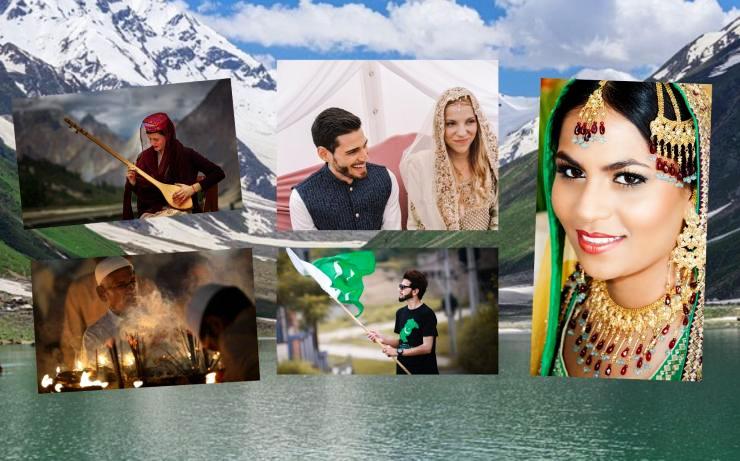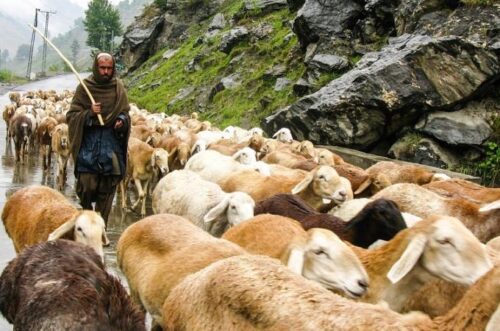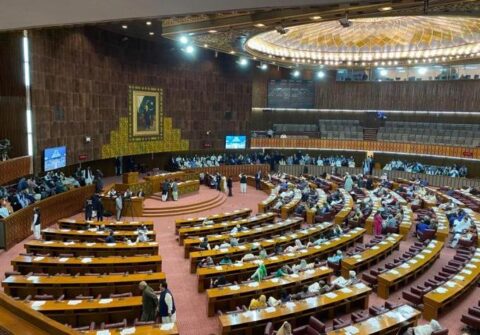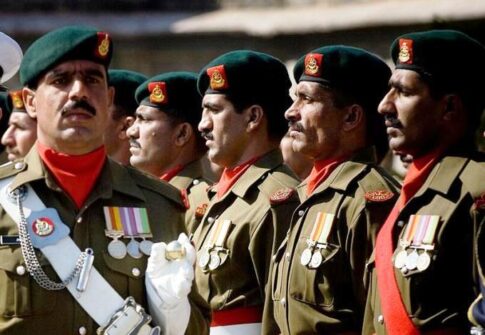Diversity of cultural and religious identity.

Pakistan has the second largest Muslim population after Indonesia.
Its population is young, with an average age of around 21 years, and is very diverse from an ethnic point of view with notable somatic and cultural varieties.
The largest ethnic group is made up of the Panjians who account for approximately 45% of the population, followed by the Pashtuns with 15%, the Sindhis with 14%, while the least numerous are the Sariaki and Baluchis.The country records one of the highest demographic growth rates in the world, as demonstrated by the fact that since independence it has gone from 65 million inhabitants in 1972, to 84 million in 1981, an estimated 176 million in 2009, and 250 million at present.
The majority of the population follows the Islamic faith, as is understandable from the historical evolution of the country, of which Sunnis are around 80% and Shiites are 20%. This factor, although constituting the strongest reason for state cohesion, does not exclude conflicts between a reformist vision and a traditionalist interpretation of Islam, causing frequent social and political clashes that periodically trouble the country. In addition to Islam, there are also small Christian and Hindu minorities.

Pakistan currently has a rural population of around 62% and villages represent the most widespread form of settlement. (Photo: Pixabay)
The country is also home to several million Afghan refugees who arrived in Pakistan in various stages at the time of the Soviet invasion of the country, the civil war, and the NATO invasion. This is due to the fact that the country, during the Soviet invasion in Afghanistan, in addition to offering logistical support to the Afghan guerrillas, then financed by Washington, received huge subsidies from the United States to welcome Afghan refugees, mainly Pashtuns.
Pakistan currently has a rural population of around 62% and villages represent the most widespread form of settlement. The territorial morphology also significantly affects the average population density, recording close on depopulation in the northern part, in the western part and partially in the South East. Thus, we go from fewer than 20 inhabitants per K/2 in Baluchistan, to around 360 inhabitants per K/2 in Punjab. Of the cities, Karachi is the most populous with over 15 million inhabitants. It is located on the coast along the Arabian Sea in the province of Sindh and was the country’s capital until 1959, before the creation of Islamabad.
Today, Karachi is building an important economic and financial centre in which the IT sector is also developing and where the most important Pakistani port is also present. It is followed by Lahore, on the Ravi River, the capital of Pakistani Punjab which with around 14 million inhabitants represents a cultural and commercial centre. The capital Islamabad, located on the Potwar plateau, has only one million inhabitants. The city, despite being the main political centre of the country, has never taken off from an economic point of view due also to its position which places it far from Postwar what constitutes the traditionally developed area of Pakistan. From a linguistic point of view, Urdu and English constitute the official languages even if spoken by only 8% of the population, while Punjabi, a recognized but unofficial language, is spoken by almost half of the population. This is followed by various regional idioms
in day-to-day use.

Session of the National Assembly of Pakistan. Pakistan is a federal parliamentary republic based on the 1973 constitution. Photo: VOA
From an institutional point of view, Pakistan is a federal parliamentary republic based on the 1973 constitution, comprising four main provinces (Punjab, Sindh, North-West Frontier Province, and Baluchistan), in addition to the Islamabad Capital Territory and those of the north, Gilgit, Baltistan and Azad Kashmir. The cultural identity of the provinces obviously precedes the formation of Pakistan and one of the most difficult tasks of the central state is to affirm the idea of a single Pakistani nation above regional particularisms.
The Parliament (Majlis-E-Shoora) is bicameral, and is made up of the National Assembly and the Senate, composed of 342 and 104 members, respectively. The representatives of the Assembly are directly elected by the people and hold office for five years, while those of the Senate hold office for six years. Regarding the latter, every three years the people vote to change half of the representation. The senators are elected from the four provincial assemblies, each of which elects 23 representatives; another eight are chosen by the members of the National Assembly representing the Federally Administered Tribal Areas (FATA); the last four are instead chosen by all the members of the National Assembly to represent the federal capital Islamabad. The National Assembly also elects the prime minister who holds office for five years, while the president of the Republic is elected by an Electoral College which is a body composed of the Senate, the National Assembly, and the members of the Provincial Assemblies. The mandate of the President of the Republic lasts five years and can be renewed only once.

The military acts as arbiters of power even though the country has had its longest period of civilian government since 2008. File Archive
Despite its well-structured institutional framework, the country coexists in a state of indetermination between the military sphere and the political-civil sphere with the main elective institutions of the presidency and parliament which, although endowed with sovereignty, are in fact subordinated to the conditioning of the military leaders who continue to influence considerably foreign and national security policy, as well as the management of Pakistan’s nuclear program. The military, in fact, acts as arbiters of power even though the country has had its longest period of civilian government since 2008. Then there is the role of the ISI secret services which is also historically ambiguous both towards the executive and the rest of the military apparatus. In fact, the ISI, despite formally depending on the Prime Minister, maintains wide margins of independence. (Photos: Pixabay)
(F.R.)



